Sea-floor photography was collected at 24 stations within the H12007 survey area as part of this study (fig. 15). The Mini-SEABOSS system was used aboard the RV Rafael to obtain video photography and 3 to 6 still photographs at each station as the vessel drifted over the seabed for 2 to 5 minutes. A total of 90 still photographs of the sea floor were obtained. The field of view of each image is approximately 50 cm wide (SEABOSS 50 cm above the bottom).
Low-resolution images (150 pixels wide) of the photographs may be viewed by browsing the thumbnails in the photo gallery below. These thumbnails are hyperlinked to medium-resolution images (600 pixels wide) for more detailed viewing. Alternatively, the directory containing the full-resolution images may be accessed by clicking here. These full-resolution images can be identified using the .jpg image names in galleries below. Textural analyses of samples obtained at these stations, where available, are provided in the Sediment Distribution section of this report.
| CR-1 / Flat to faintly rippled sand and gravelly sand with scattered patches of pea and pebble gravel. Occurrences of shells and shell debris range from scattered distributions to patches of thin, dense beds. Larger shells are covered in barnacles and are typically surrounded by scour depressions. Bushy hydrozoans are common; moon snail casings are present. |
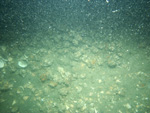
cr1a |
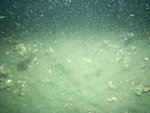
cr1b |
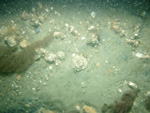
cr1c
|
|
| CR-2 / Dense shell beds composed largely of surf-clam valves and Crepidula. Larger shells are encrusted with barnacles and Crepidula; shells are typically covered with a thin veneer of sediment. Small patches of faintly rippled sand and gravelly sand indicate that the shell beds are not very thick (<10 cm). Hydrozoans, spider crabs, whelk and moon snail casings are present. |
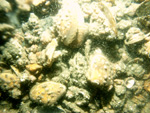
cr2a |
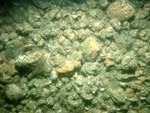
cr2b |
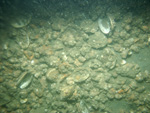
cr2c
| |
| CR-3 / Faintly rippled sand with scattered shells and shell debris. Hydrozoans, small burrows, animal tracks, hermit crabs, and moon snails are present. |
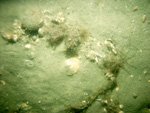
cr3a |
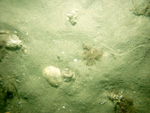
cr3b |
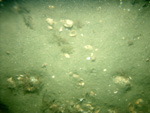
cr3c
|
|
| CR-4 / Clean, current-rippled sand on large sand waves. Fine-grained sediment, primarily organic debris, is concentrated in the ripple troughs; hermit crabs and animal tracks are present. |
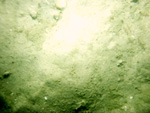
cr4a |

cr4b
| 
cr4c |
|
| CR-5 / Distributions of shells and shell debris are patchy and range from scattered to dense thin beds, which overlie flat to faintly rippled gravelly sediment. Larger shells are covered in barnacles and Crepidula, and are typically surrounded by scour depressions. Bushy hydrozoans, moon snail casings, whelk, sea robins, and small burrows are present. |

cr5a |
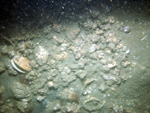
cr5b |
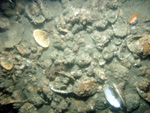
cr5c
|

cr5d |
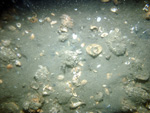
cr5e |
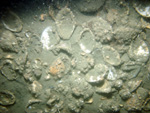
cr5f
|
|
|
| CR-6 / Flat to faintly rippled sand with patches of gravelly sediment and shells and shell debris. Hydrozoans, moon snail casings, sea robins, flounder, and spider crabs are present. |
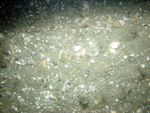
cr6a |
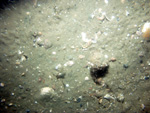
cr6b |
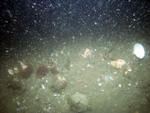
cr6c
|
|
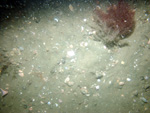
cr6d |
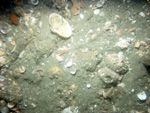
cr6e
|
|
|
| CR-7 / Dense shell beds composed largely of surf-clam valves and Crepidula. Larger shells are encrusted with barnacles and Crepidula; shells are typically covered with a thin veneer of sediment and some of the surf clams are alive. A small patch of faintly rippled sand and gravelly sand indicate that the shell beds are not very thick (<10 cm). Hydrozoans and moon snail casings are present. |

cr7a |

cr7b |
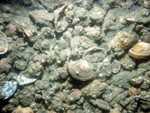
cr7c
|
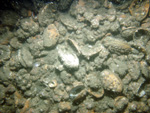
cr7d
|
| CR-8 / Flat to faintly rippled sand and gravelly sediment. Occurrences of shells and shell debris range from scattered distributions to patches of thin, dense beds. Larger shells are covered in barnacles and Crepidula. Bushy hydrozoans, moon snail casings, sea robins, whelk, and spider and cancer crabs are present. |
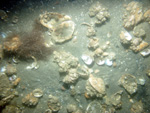
cr8a
|
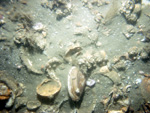
cr8b |
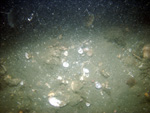
cr8c
|
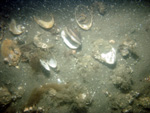
cr8d |
| CR-9 / Clean, current-rippled sand on megaripples and large sand waves. Some shell debris is concentrated in the ripple troughs; whelk and animal tracks are present. |
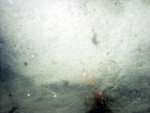
cr9a |
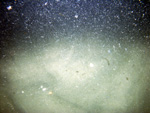
cr9b
|

cr9c
|

cr9d |
| CR-10 / Faintly rippled sand with scattered shells and shell debris. Bushy hydrozoans, small burrows, animal tracks, and moon snails are present. |
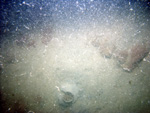
cr10a |
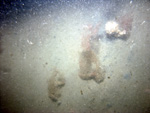
cr10b |
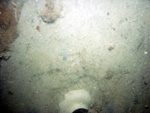
cr10c
| 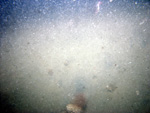
cr10d |
| CR-11 / Strongly to faintly rippled sand with a patchy shell distribution and shell debris concentrating in the ripple troughs. Bushy hydrozoans, moon snail casings, whelk, and spider and cancer crabs are present. |
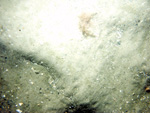
cr11a |
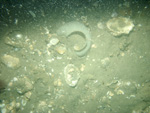
cr11b |
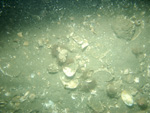
cr11c
|

cr11d |
| CR-12 / Dense shell beds to patches with abundant shells composed largely of surf-clam valves and Crepidula. Larger shells are encrusted with barnacles and Crepidula; shells are typically covered with a thin veneer of sediment. A small patch of faintly rippled sand and gravelly sand indicate that the shell beds are not very thick (<10 cm). Hydrozoans, whelk, sea robins, and moon snail casings are present. |
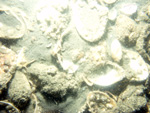
cr12a |
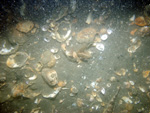
cr12b |
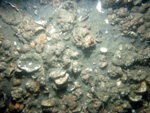
cr12c
|
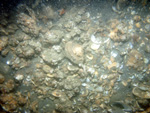
cr12d |
| CR-13 / Clean, current-rippled sand on large sand waves. Trace of shell debris is concentrated in the ripple troughs; spider crabs and sparse seaweed and hydrozoans are present. |
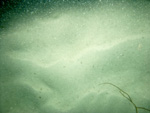
cr13a |
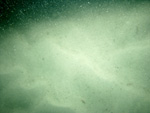
cr13b |
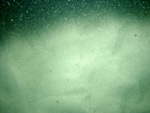
cr13c
|
|
| CR-14 / Dense shell beds to patches with abundant shells composed largely of surf-clam valves and Crepidula. Larger shells are encrusted with barnacles and Crepidula; shells are typically covered with a thin veneer of sediment. Small patches of faintly rippled sand and gravelly sand indicate that the shell beds are not very thick. Hydrozoans, whelk, spider and cancer crabs, and sea robin are present. |
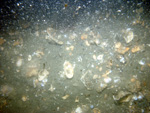
cr14a |
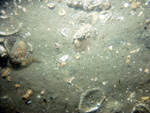
cr14b |
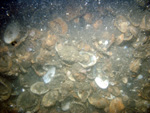
cr14c
|

cr14d
|
| CR-15 / Flat to faintly rippled sand. Occurrences of shells and shell debris range from scattered distributions to patches of thin, dense beds. Larger shells are covered in barnacles and Crepidula. Bushy hydrozoans and spider crabs are present. |
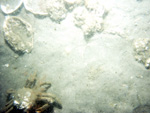
cr15a |
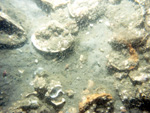
cr15b |
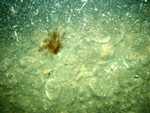
cr15c
| 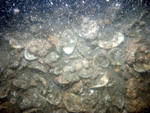
cr15d
|
| CR-16 / Clean current-rippled sand on large sand waves. Trace of shell debris is concentrated in the ripple troughs; shells are more abundant in the sand-wave troughs. Spider crabs are present. |
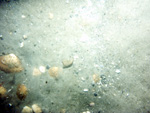
cr16a |
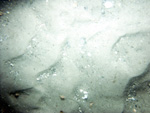
cr16b
|

cr16c
| |
| CR-17 / Clean, current-rippled sand on megaripples. Trace of shell debris is concentrated in the ripple troughs; scour features are present around shells. |
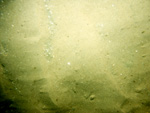
cr17a |
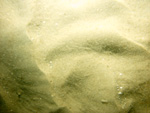
cr17b |
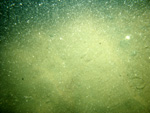
cr17c
|
|
| CR-18 / Current-rippled sand with shell debris concentrated in the ripple troughs. Scour features are present around scattered larger shells. Worm tubes, sea robin, and spider crab are present. |
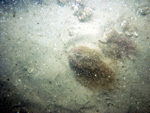
cr18a |

cr18b |
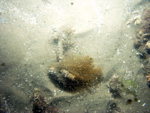
cr18c
|
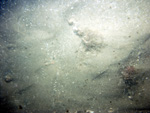
cr18d
|
| CR-19 / Clean, current-rippled sand on megaripples interspaced with flat, current-swept sea floor in the megaripple troughs. Trace of shell debris is concentrated in the ripple troughs; scour features are present around larger shells. Hydrozoans, worm tubes, finfish, and spider and hermit crabs are present in the megaripple troughs; cancer crabs are present on the megaripple crests. |
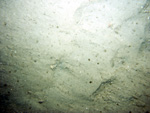
cr19a |
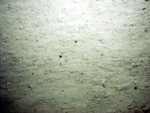
cr19b |
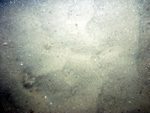
cr19c
|
|
| CR-20 / Clean, current-rippled sand on the flanks of sand waves interspaced with flat, current-swept sea floor in the wave troughs. Trace of shell debris is concentrated in the ripple troughs; scour features are present around larger shells. Hydrozoans, worm tubes, and small burrows are present. |
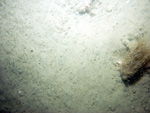
cr20a |
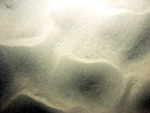
cr20b |
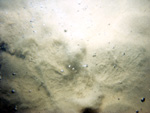
cr20c
|

cr20d
|
| CR-21 / Faintly rippled to flat, sandy sea floor with a current-swept appearance. Scour features around scattered larger shells; hydrozoans, cancer crabs, worm tubes, and small burrows are present. |
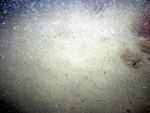
cr21a |
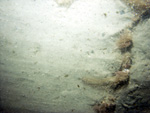
cr21b |
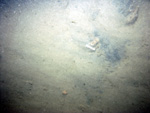
cr21c
|
|
| CR-22 / Clean, current-rippled sand on the flanks of megaripples. Some shell and organic debris is concentrated in the ripple troughs; scour features are present around larger shells. Hydrozoans, drifting seaweed, sparse worm tubes, and whelk are present. |
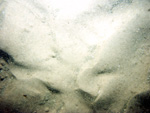
cr22a |

cr22b |
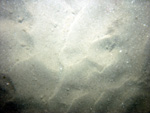
cr22c
|
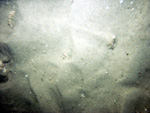
cr22d |
| CR-23 / Faintly rippled to flat, sandy sea floor with a current-swept appearance. Scour features around shells; hydrozoans, hermit crabs, worm tubes, and small burrows are present. |
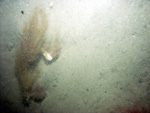
cr23a
|
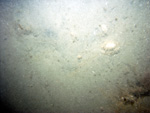
cr23b | 
cr23c
|
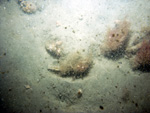
cr23d |
| CR-24 / Clean, current-rippled sand on the flanks of sand waves interspaced with flat, current-swept sea floor of gravelly sediment in the wave troughs. Trace of shell debris is concentrated in the ripple troughs. Shells and shell debris are much more common in the wave troughs, where scour features are present around larger shells and hydrozoans, moon snails, spider crabs, worm tubes, and small burrows are present. |
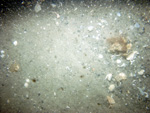
cr24a |
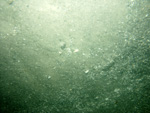
cr24b
| 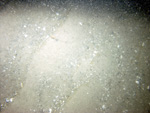
cr24c
|
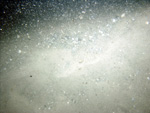
cr24d |